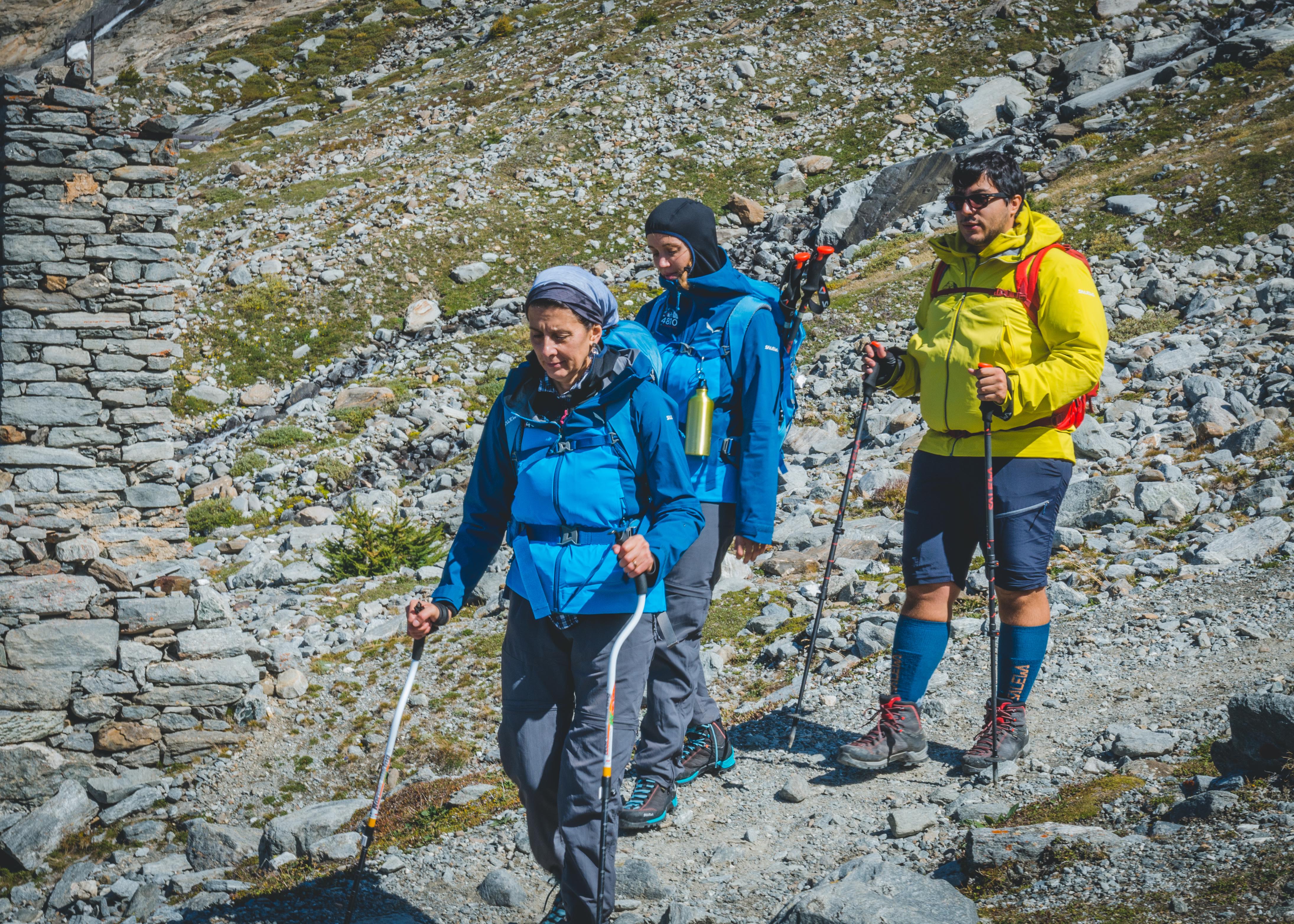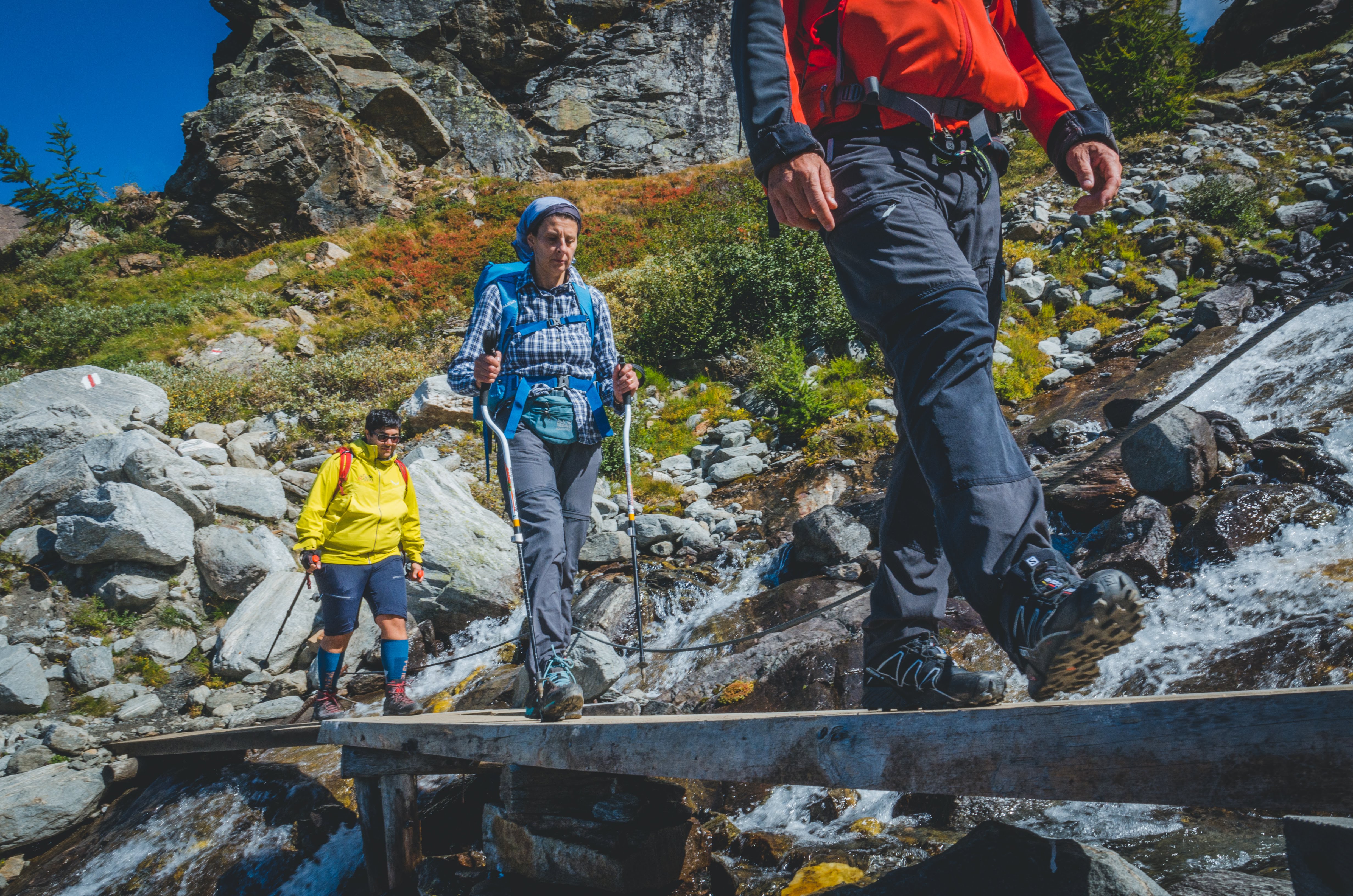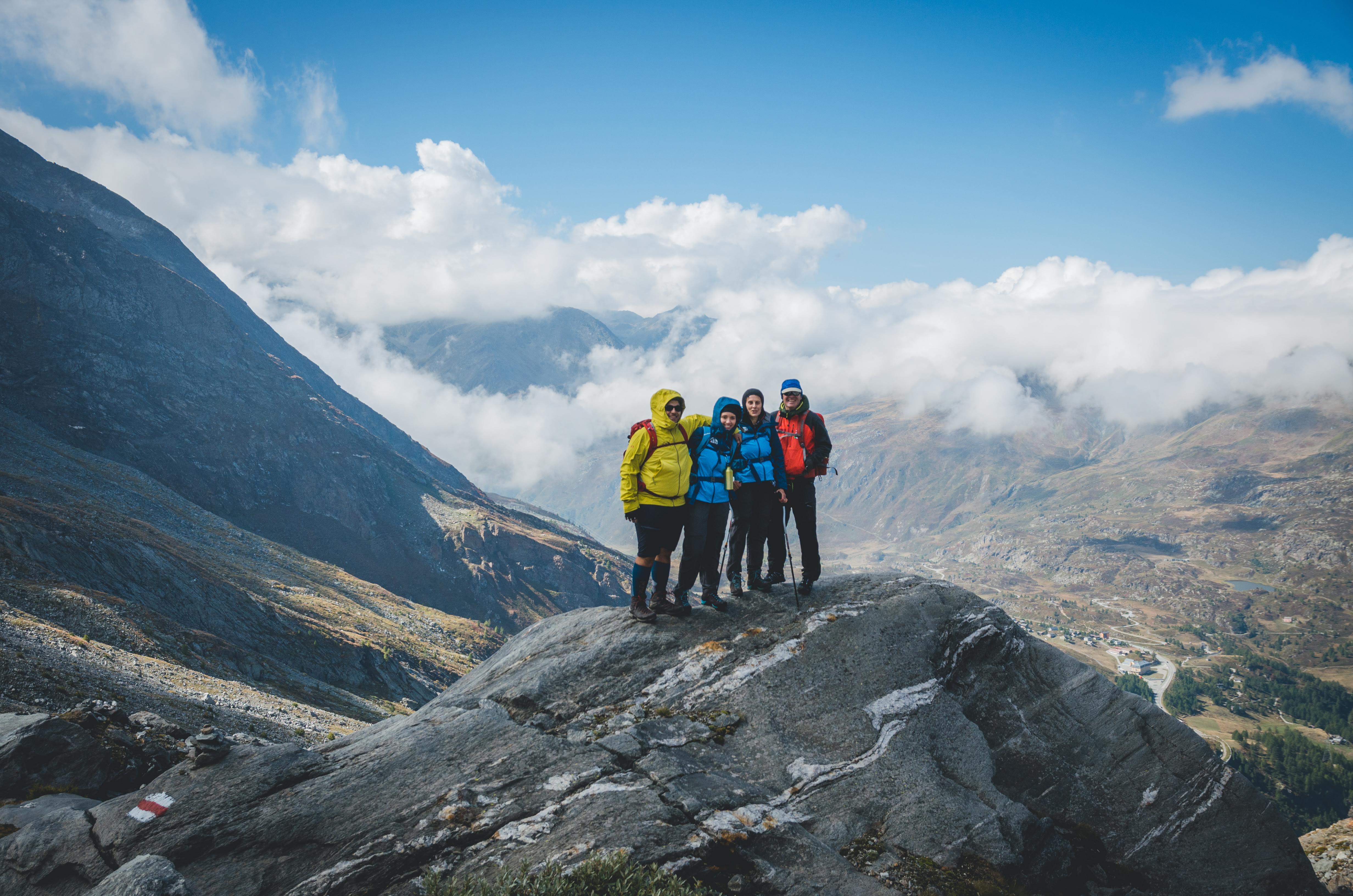
Everyone here is inevitably facing a journey that will have obstacles. Managing to prepare ourselves to reach the peak of the Mont Blanc with awareness, building the technical capacity and the necessary training, the physical preparation and the right state of mind, continuing to work and live life as if nothing has changed…
It’s a huge challenge for everyone.
Some challenges, though, are bigger than others. This is my thought as I watch - in admiration and amazement - Lilli walking in front of me, with a steady and constant pace, slightly slower than other members of group, but nevertheless as a real native of the mountains. If it weren’t for that left leg that drags just slightly, I would have never thought of the battle that she is fighting… sometimes winning, sometimes not as much.
Lilli is a great lover of the mountains. She’s always done long hikes, enough that she’s already seen half of this expedition up close, when she walked the classic Mont Blanc tour. She would be one of the people that is most prepared to face this project, probably finding herself among the first to reach the top at each outing, if it weren’t for the fact that, besides her backpack, she carries another heavy weight on her shoulders. Or rather, her legs. Multiple sclerosis.

“Am I slowing you down? Do you want to go ahead?” she asks, stopping with a smile.
“No, don’t worry. I like walking slowing in the mountains,” I answer honestly. And we start chatting… and we don’t stop until we get back on the bus to Milano!
“You know, I’ve been living with this thing for twenty years. The beginning was hard – I wasn’t walking any more, I was afraid I’d never get better. Instead, until not too long ago I was lucky. Overcoming the attacks that sometimes struck, I managed to do a lot of what I love: mountains, running, all kinds of activities! Then, 5 years ago, a breakdown, slow but steady: no more running, no more high heels, unsteady steps.”
While recounting these things, she smiles, leaving no doubt about why she is so loved by her team. She’s a force to be reckoned with and I feel an indescribable admiration for her. She pushes with her curved walking sticks, made for Nordic waking, helping and accompanying each step with her arms. I ask her what she thought when they told her about M4810. Imagine working in a Change Management consulting company and being proposed a change that you’re not sure your body will allow you to make. Now this is a challenge. And she starts laughing!
“I loved the idea, obviously! It was an unprecedented challenge for me. I didn’t know what would happen – I still don’t. Every day, with every outing, I tell myself “let’s see where I’ll get to”. I thought I wouldn’t make it, not even to face a part of it. And instead I’m satisfied in seeing that I can. And I’m motivated for the next step.
The first outing was the worst, it was truly hard, also because I wasn’t trained any more. I told myself that this adventure would end immediately, that I’d never reach the top with the rest of this group. At the third phase, after having skipped the second, I took off discouraged. But… but my legs surprised me! I hadn’t tried to reach the top of the Mont Fallère (http://www.m4810.com/blog/monte-fallere) just because I wasn’t sure about the via ferrata section, but I was almost up for it. And this summer I trained so much, I spent it all in the mountains, I really wanted to make it to the top… but this time maybe my legs don’t agree.”
She stops, and we both look up, towards those well ahead of us. It’s true, we’re far behind. And walking behind her I realise that she’s getting tired, even if she doesn’t say anything. I wonder if we should stop chatting, maybe she wants to concentrated on the walk. But just a few seconds of contemplation later, she starts moving again – and talking.

“Anyway, I continue to train form different points of view. You know, there are various things to control: I do yoga for balance, Nordic walking for strength, physiotherapy… this adventure is just another piece of the puzzle! In the end, I always believed that physical activity is fundamental in fighting this illness, even twenty years ago, when there weren’t the studies to demonstrate it. Today, there are many confirmations! Also because depression in some cases is the result of the pathological process of MS. It’s not easy to keep up a good mood, that’s the truth. And sports are… just fantastic. Like that time that I tried to run again: I didn’t think I could do it. And instead it was incredible: I want to laugh saying it, but I was like Forrest Gump, the “stiffness” of my legs went away one step at a time and… I was running! I was running again.”
We stop again. By now the rest of the group is out of sight, 5 of us are left and the weather is getting worse: big clouds are rolling over our heads, it seems like they’re ready to swallow us. And there’s a deadly cold, a freezing wind that goes straight to the bones! We put on all our layers, especially Lilli who was practically in a t-shirt, and we start walking again. We decided that the peak will have to wait today, and we’re a little bit happy not to be with the rest of the group among the clouds, in the wind and fog. But this doesn’t mean that we shouldn’t have our own good view!
So, we orient ourselves towards a rocky peak, a couple of kilometres away, this time talking about something else. And eventually we reach, after a half hour walk, OUR summit.
The view is beautiful, not dimmed by the clouds that are about to rest on our heads. And we can’t miss this photo opportunity!
While we sit and bite into sandwiches, energy bars, and almonds to recharge for the hike down, Lilli starts laughing and exclaims:
“What a thing to do! I really underestimated the cold. I felt so stiff, much more than usual. I was so exhausted, after all my training. But now that I covered up and I’m warmer, I could almost take off to climb with the others! It’s a bit late now, but I know I’ll try next time. I just need to dress warmly… and have some classical music.”
“Classical music?” we ask, surprised.
“Yes, while I climb I concentrate on my steps and a rhythm, a melody, takes shape in my mind. It’s nice company when I’m in the mountains.”

We start walking again, and we all find the descent is more difficult than the climb. The big rocks that make up the path are unstable, and gravity pulls us towards the risk of falling.
I wanted to leave Lilli alone, let her enjoy her music, but I’m too in awe of her spirit and her strength, and I can’t hold myself back.
“Lilli, but how do you feel about this adventure? How do you face it, with every step?” I’m not just referring to the outings, actually. She seems to understand.
“You know, it’s like there are two parallel journeys that I’m on. The M4810 like the illness. One is mental, in discovering things I didn’t know, new challenges and new achievements. The other is physical. And in the physical one, you’re happy to realise that your body is always trying to face the walk, one new step at a time. It reinvents itself continuously, it learns to substitute things that it can’t do with certain muscles any more, and it uses others. And like this, I learn how to go a bit further every time. If and when I will realise that I can’t compensate with substitutes, I’ll help the rest of the group reach the top without me.”





